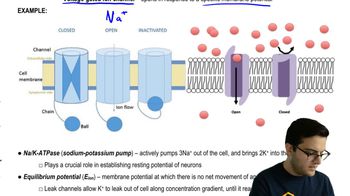Which of the following is an adaptation that enhances the uptake of water and minerals by roots?
a. Mycorrhizae
b. Pumping through plasmodesmata
c. Active uptake by vessel elements
d. Rhythmic contractions by cells in the root cortex
 Verified step by step guidance
Verified step by step guidance Verified video answer for a similar problem:
Verified video answer for a similar problem:

